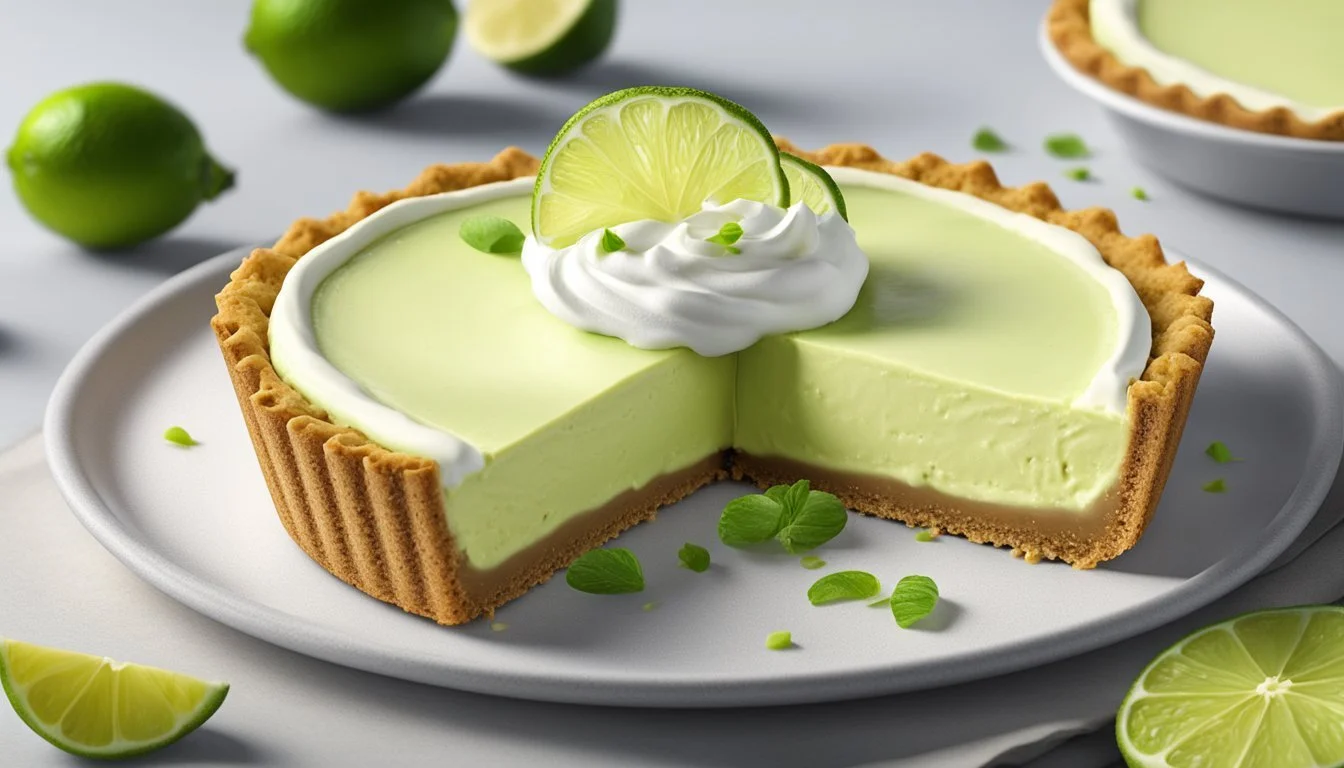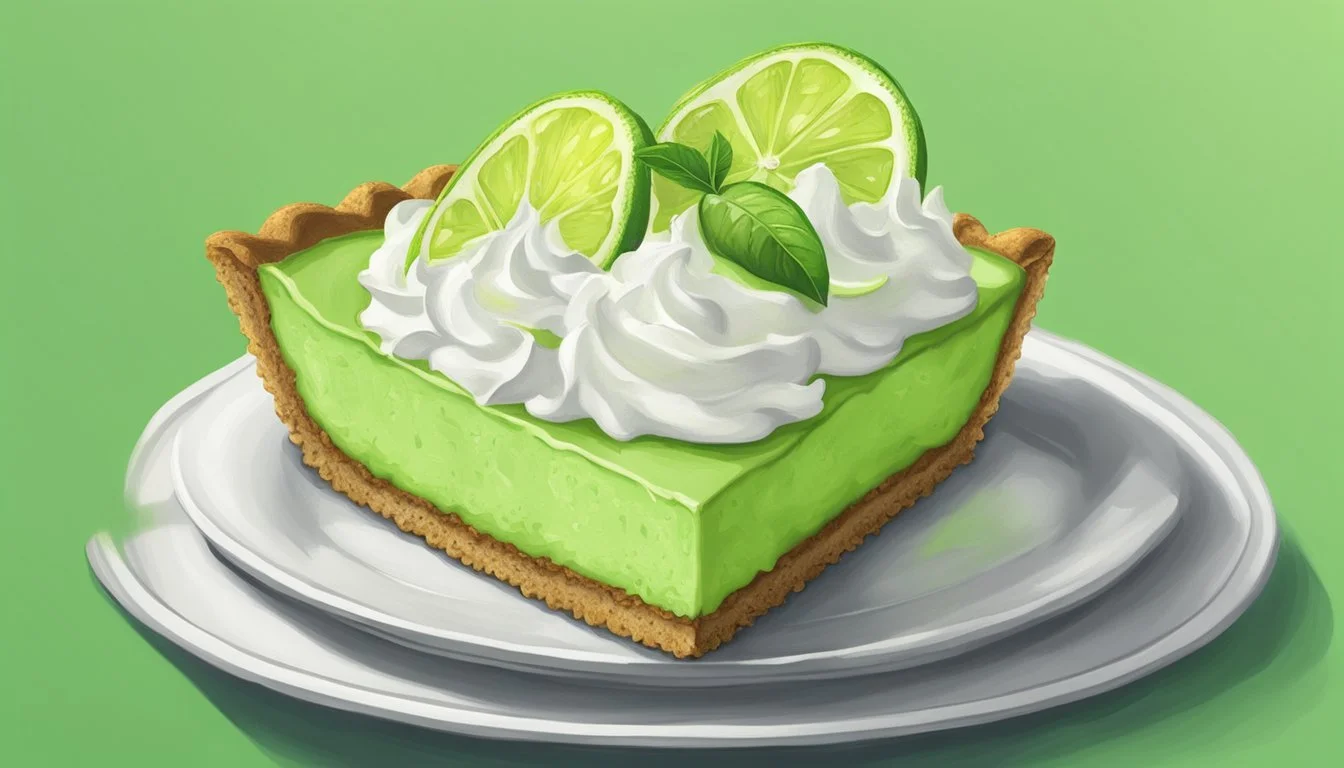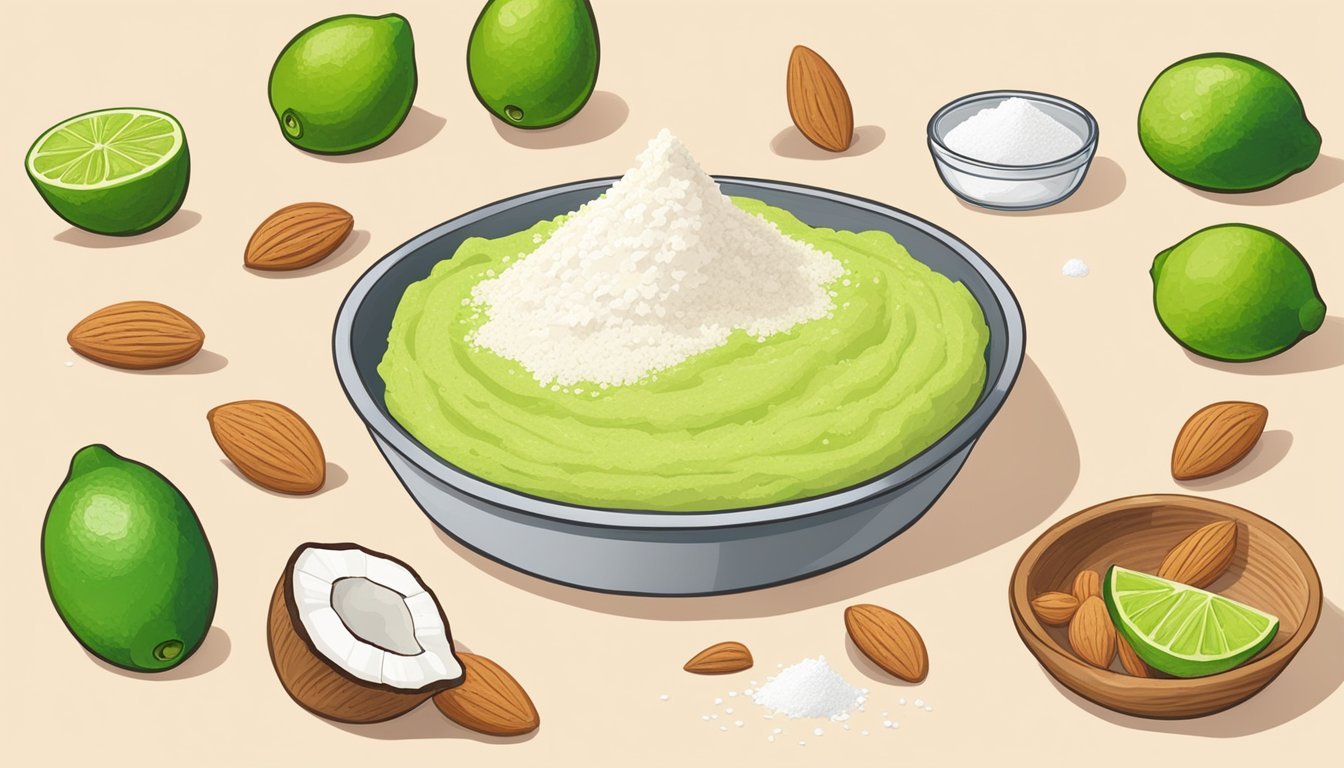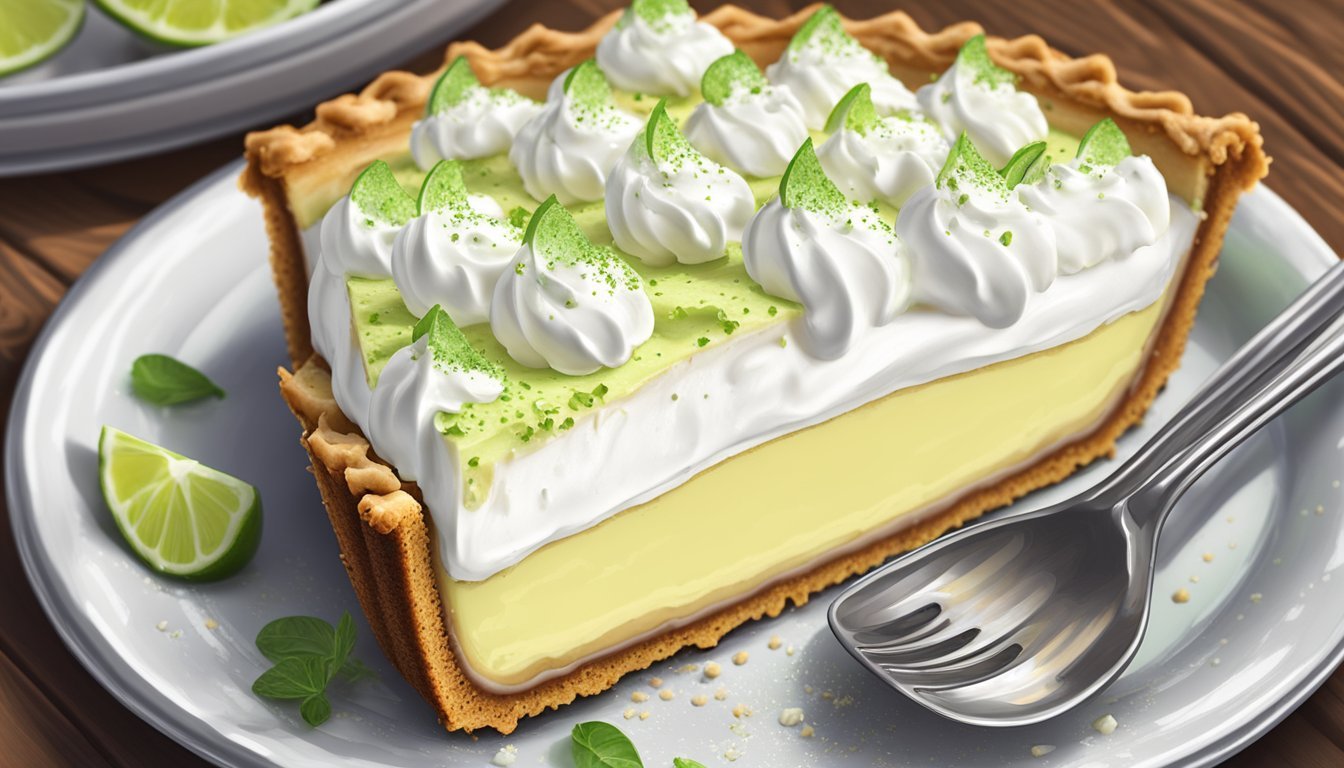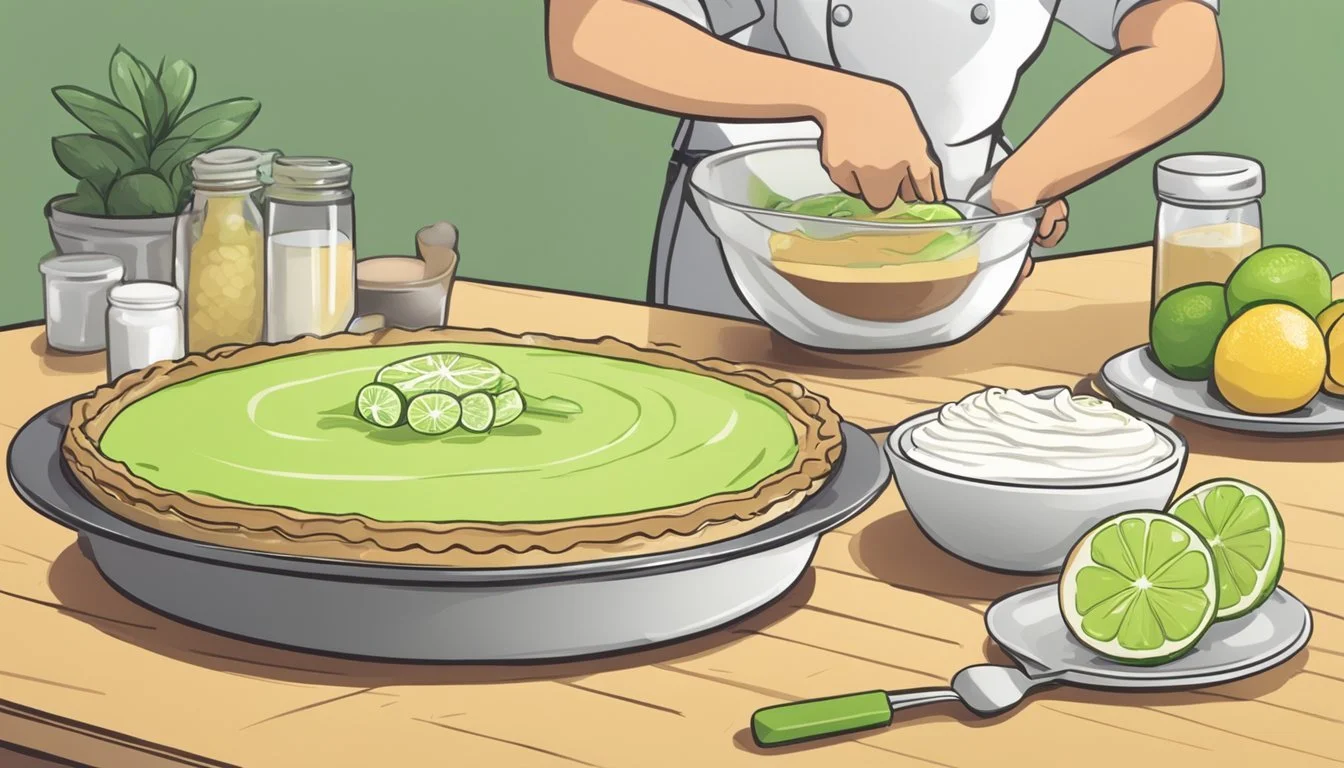Is Key Lime Pie Gluten-Free?
Unveiling the Facts About This Classic Dessert
Key lime pie is a classic American dessert known for its creamy texture and tart flavor, originating from the Florida Keys. The traditional recipe calls for a crust made from graham cracker crumbs, sugar, and butter, paired with a filling that includes key lime juice, egg yolks, and sweetened condensed milk. However, for individuals with celiac disease or gluten sensitivity, the presence of gluten in the graham cracker crust raises a concern, as conventional graham crackers are made from wheat flour which contains gluten.
Making key lime pie gluten-free requires substituting the traditional graham cracker crust with a gluten-free alternative. This can involve using gluten-free graham crackers or other suitable substitutes like almond flour or gluten-free digestive biscuits. These gluten-free crust options ensure that the pie is safe for those avoiding gluten, all while maintaining the dessert's authentic taste and satisfying texture.
In the culinary landscape, gluten-free key lime pie has become increasingly accessible due to the availability of gluten-free ingredients. Restaurants and home bakers alike are adapting recipes to cater to the dietary needs of their guests and loved ones. This shift demonstrates a growing awareness and consideration for food sensitivities, allowing everyone to enjoy this beloved dessert without compromising their health or flavor expectations.
Understanding Gluten-Free Diets
When considering gluten-free diets, it's important to understand what gluten is and the benefits of eliminating it from one's diet, especially for individuals with gluten-related disorders.
What Is Gluten
Gluten is a composite of proteins found in wheat, barley, rye, and triticale. It acts as a glue that holds foods together, giving them a stretchy quality and maintaining their shape. For those with Celiac Disease or Gluten Sensitivity, consuming gluten can lead to health issues, as their bodies react negatively upon ingesting these proteins.
Benefits of Gluten-Free
For individuals with Celiac Disease, adhering to a gluten-free diet is vital as it is the only known effective treatment. Removing gluten can lead to significant health improvements:
Alleviation of digestive symptoms
Reduced chronic inflammation
Enhanced nutrient absorption
Following a gluten-free diet may also provide benefits for those with Gluten Sensitivity by minimizing symptoms such as bloating, fatigue, and headaches. However, it's crucial for these diets to be well-planned to ensure nutritional adequacy.
Key Lime Pie Origins and Traditions
Key Lime Pie, a traditional dessert of the Florida Keys, is a rich, tangy treat with a history as vibrant as its flavor. The following sections will explore the pie’s storied past and the classic components that make up this beloved dessert.
The History of Key Lime Pie
The creation of Key Lime Pie hearkens back to the late 19th century in the Florida Keys. While the exact origin is a subject of debate, many believe the pie was first made by "Aunt Sally," a cook at Key West's Curry Mansion. Access to canned sweetened condensed milk, introduced by the Borden Dairy company in the 1850s, played a crucial role in the pie's invention, as the lack of proper refrigeration in the Florida Keys made fresh milk a rarity. The recipe she concocted likely included Key lime juice, sweetened condensed milk, and egg yolks, embodying the ingenuity of using local and available ingredients.
Traditional Ingredients
Key Lime Pie is characterized by its simple yet distinct combination of ingredients:
Key Lime Juice: The juice from Key limes, a citrus smaller and more tart than regular limes, is the defining flavor of the pie.
Sweetened Condensed Milk: Creamy and rich, it balances the tartness of the lime juice and adds sweetness.
Egg Yolks: They provide structure and contribute to the pie's custard-like texture.
These components are typically poured into a pie crust, which ranges from a graham cracker crust to a buttery, flaky pastry. Despite evolving recipes, these core ingredients remain central to the traditional Key Lime Pie.
Key Limes Vs. Regular Limes
When comparing key limes to regular limes, most commonly the Persian lime, it's important to consider their taste, texture, and nutritional content to understand the differences that might affect recipes and usage.
Taste and Texture Differences
Key limes are typically smaller and rounder than Persian limes and are known for their unique flavor profile. They impart a more intense, aromatic, and slightly floral taste which is both tart and sweet. Due to their higher acidity and stronger aroma, key limes are often favored in recipes like key lime pie for their distinct zest.
The texture of key lime's skin is thinner and more delicate, making it softer to the touch compared to the thicker, rougher skin of Persian limes. Persian limes, on the other hand, have a less complex flavor profile, being mainly tart and slightly bitter, with less sweetness and fragrance compared to key limes.
Nutritional Comparison
Here's a basic nutritional comparison per 100g serving:
Nutrient Key Limes Persian Limes Calories 30 30 Carbohydrates 11g 11g Dietary Fiber 2.8g 2.8 g Sugar 1.7g 1.7g
Gluten-Free Ingredients Explained
When making a gluten-free key lime pie, it is crucial to understand and choose ingredients that cater to the gluten-free requirement, especially in relation to the crust and hidden gluten sources.
Alternative Flours and Grains
Crust: The foundation of any pie, especially key lime pie, is typically a graham cracker crust. For a gluten-free version, one must opt for gluten-free graham crackers, which are made from alternative flours and grains that do not contain gluten. These alternatives include:
Rice Flour: Often used for its neutral flavor and smooth texture.
Almond Flour: Popular for its rich, nutty flavor and is also grain-free.
Coconut Flour: Offers a slightly sweet taste and is beneficial for its high fiber content.
When these gluten-free flours are combined with ingredients such as melted butter and sugar, they can effectively replicate the taste and texture of a traditional graham cracker crust.
Identifying Hidden Gluten
Ingredients: Many ingredients can contain hidden gluten, which is a protein found in wheat, barley, and rye. It's important to scrutinize every component that goes into a key lime pie to ensure its gluten-free integrity. Key ingredients to consider include:
Binding Agents: Some thickeners and stabilizers can contain gluten, so it's essential to verify their gluten-free status.
Flavorings and Extracts: While most are gluten-free, always check that vanilla extract and other flavorings are certified gluten-free to avoid contamination.
Fillings: Pre-prepared key lime fillings might have additives with hidden gluten, making it safer to make the filling from scratch using gluten-free ingredients.
In sum, meticulous attention to the selection of gluten-free graham crackers and awareness of hidden gluten sources is paramount when preparing a gluten-free key lime pie.
Making Gluten-Free Key Lime Pie
When creating a gluten-free Key Lime Pie, the focus is on replacing traditional ingredients that contain gluten with gluten-free alternatives to ensure the pie retains its iconic texture and flavor.
Substituting Gluten-Free Ingredients
The foundation for a gluten-free Key Lime Pie is choosing the right substitutes for ingredients that traditionally contain gluten. The filling typically includes sweetened condensed milk, which is naturally gluten-free and provides a rich, creamy texture. Lime juice or key lime juice are essential for the tangy flavor and can be used interchangeably, although key lime juice offers a more authentic taste. Lime zest adds an aromatic citrus zing without concern for gluten content.
For binding agents that may contain gluten, one should confirm that they are labeled gluten-free. Thickeners or stabilizers should also be vetted for gluten, ensuring the final product is safe for those with gluten sensitivities.
Crust Options
A classic Key Lime Pie crust is made from graham cracker crumbs, which usually contain gluten. A gluten-free Key Lime Pie requires making a gluten-free graham cracker crust. You can either use ready-made gluten-free graham crackers or make your own from gluten-free flours and binders. Here’s a brief guide to assembling the crust:
Gather gluten-free graham cracker crumbs.
Mix the crumbs with melted butter and, if desired, a touch of sugar. Brown sugar can add depth, while granulated sugar keeps it light.
Securely press the mixture into the bottom and up the sides of the pie dish.
Bake at 350°F (177°C) to set the crust before filling.
A successful gluten-free crust will have a similar texture and flavor to its traditional counterpart while conforming to gluten-free dietary restrictions.
The Importance of Lime Juice
The distinctive tart flavor of key lime pie cannot be achieved without the correct type of lime juice, which is pivotal to the authenticity of the dish.
Choosing the Right Lime Juice
When preparing key lime pie, one must consider the variety of lime juice available. Key lime juice is essential for a genuine key lime pie, renowned for its distinctive tartness and aromatic flavor compared to regular lime juice from Persian limes. Key limes are smaller and tend to be more aromatic with a higher acidity level, which significantly impacts the pie's flavor profile.
Key Lime Juice: Tart, aromatic, and traditional in key lime pie.
Regular Lime Juice: Less tart, widely available, but less traditional.
Fresh vs. Bottled Lime Juice
The debate between fresh and bottled lime juice is significant when it comes to flavor and quality.
Fresh Lime Juice:
Pros: Fresher, more vibrant flavor; contains natural enzymes.
Cons: Shorter shelf life; requires more preparation time.
Bottled Lime Juice:
Pros: Convenience; longer shelf life.
Cons: Can contain preservatives; may have a less fresh taste.
Despite bottled juice's convenience, most dessert enthusiasts argue one cannot replace the zest and fresh tang that comes from freshly squeezed key lime juice – it's an irreplaceable component of the classic key lime pie.
Recipe Breakdown
In this section, readers will discover how to craft a gluten-free Key Lime Pie, including a detailed recipe and step-by-step instructions to ensure a delightful dessert experience.
Gluten-Free Key Lime Pie Recipe
Ingredients:
1 1/2 cups gluten-free graham cracker crumbs
1/3 cup melted butter
1/4 cup granulated sugar
3 egg yolks
1 (14 oz) can sweetened condensed milk
1/2 cup key lime juice
Zest from 2 key limes (optional for garnish)
Recipe Card Notes:
Preparation Time: 20 minutes
Cook Time: 15 minutes
Chill Time: 2 hours
The crust uses gluten-free graham cracker crumbs to remain celiac-friendly. Key lime juice, egg yolks, and sweetened condensed milk combine to form a quintessential tangy yet sweet filling.
Step-by-Step Instructions
Crust:
Preheat oven to 350°F (177°C).
Mix together the gluten-free graham cracker crumbs, melted butter, and sugar until well combined.
Firmly press the mixture into the bottom and up the sides of a 9-inch pie dish.
Baking the Crust:
Bake in preheated oven for approximately 10 minutes or until set and lightly golden.
Remove from oven and allow to cool completely.
Filling:
While the crust cools, whisk together egg yolks, sweetened condensed milk, and key lime juice until smooth.
Combining:
Pour the filling into the cooled crust.
Return to oven and bake for 15 minutes, or until the filling is just set.
Chilling:
Allow the pie to cool at room temperature, then refrigerate for at least 2 hours before serving.
Garnish with key lime zest or thinly sliced key limes, if desired.
Each step is designed to ensure the pie has a balanced sweetness and a perfectly crisp gluten-free crust, culminating in a dessert that promises to satisfy the palate.
Cooking Techniques
When making a gluten-free Key Lime Pie, the techniques differ primarily based on the cooking method: baked or no-bake. These methods cater to different textures and flavors of the pie.
Baking the Perfect Pie
The traditional baked Key Lime Pie starts with preheating the oven to typically around 350°F (177°C). A gluten-free crust can be made by combining gluten-free graham cracker crumbs with melted butter — and sometimes sugar — until the mixture is well integrated. The crust is then pressed into the bottom and up the sides of a pie dish to form an even layer. It's often recommended to press the mixture firmly to ensure it holds its shape, using the flat bottom of a measuring cup for assistance.
For the filling:
Sweetened condensed milk
Egg yolks
Key lime juice
These ingredients are mixed until smooth and poured into the crust. The pie is baked until the center is set but still slightly wobbly. A precise baking time ensures that the filling is creamy yet firm.
No-Bake Variations
No-bake Key Lime Pies offer an easy and quick alternative, perfect for warmer climates or when one wishes to avoid turning on the oven. The crust can follow the same preparation as the baked version, but rather than baking, it's chilled in the refrigerator to set.
For the no-bake filling:
Combine condensed milk with key lime juice and sometimes cream cheese for added richness.
Whisk together until smooth.
Pour into the chilled crust.
The completed pie must then rest in the refrigerator until firm, which usually takes several hours. This technique results in a refreshing and cool dessert that retains a creamy, decadent texture.
Tips and Tricks
Achieving the perfect balance of tart and creamy in a gluten-free key lime pie is both an art and a science. Here are detailed serving recommendations and topping ideas to elevate this summer dessert to new heights.
Serving Suggestions
Temperature: Serve the pie cool to maintain its firm, creamy texture.
Spatula: Use a thin, sharp spatula to get clean slices.
Expert Tip: Before slicing, dipping the spatula in hot water can make for a smoother cut through the tangy filling.
Topping Ideas
Whipped Cream: Add a dollop of whipped cream on top for a visually appealing contrast and a creamy texture.
Tart Contrast: For a more tangy experience, garnish with lime zest or thin lime slices.
Easy Recipe Twist: Incorporating a touch of toasted coconut into the whipped cream can offer an unexpected flavor and texture.
Storing and Preservation
Proper storage is crucial to maintaining the freshness and flavor of Key Lime Pie. Whether it's freshly made or a cherished leftover, knowing how to store Key Lime Pie correctly can make all the difference.
How to Store Key Lime Pie
Key Lime Pie should be stored in the refrigerator. The pie must be covered to prevent it from absorbing other flavors present in the fridge and to avoid the pie drying out. Plastic wrap or foil can be used to cover the pie tightly. Ideally, one should place the pie in an airtight container before refrigerating. It will typically keep for 2-3 days.
Freezing and Thawing Tips
Key Lime Pie can be frozen for prolonged preservation. To freeze the pie, one should wrap it thoroughly in plastic wrap, then again in foil to protect against freezer burn. A heavy-duty freezer bag is also recommended for an additional layer of protection. Before serving, thaw the Key Lime Pie in the refrigerator for several hours. Keep in mind that textures may vary slightly after the pie has been frozen and then thawed.
Do: Wrap in plastic wrap, then foil, and place in a freezer bag if available.
Don't: Freeze for more than one month to maintain optimal taste and texture.
Thawing: Always thaw in the refrigerator, not at room temperature, to ensure the pie remains at a safe temperature throughout the thawing process.
Customizing Your Pie
When adapting the classic Key Lime Pie to suit various dietary needs, one must consider alternatives for common dairy ingredients and understand how to substitute animal products to achieve a vegan-friendly version. Here's how to modify your Key Lime Pie to be dairy-free or vegan without compromising the signature tangy flavor or creamy texture.
Dairy-Free Options
To create a dairy-free Key Lime Pie, the main focus should be on replacing the traditional dairy components such as butter and condensed milk. For the crust, one can swap out the butter with dairy-free alternatives like plant-based butter or coconut oil. As for the filling, dairy-free condensed milk can be used, or one can opt for full-fat coconut milk as a rich substitute.
Crust: Use dairy-free butter or coconut oil.
Filling: Choose dairy-free condensed milk or full-fat coconut milk.
Vanilla and cinnamon can be used as additional flavors to enhance the crust or filling, but ensure they are labeled dairy-free if that is a concern.
Vegan Alternatives
In a vegan Key Lime Pie, all animal products must be excluded. The crust typically requires an adjustment in the binder component. Traditionally made with butter, it can be made vegan by using alternatives like plant-based butter or oils. Vegan graham crackers should be chosen for a homemade crust to ensure no animal-derived ingredients are present.
The filling of a Key Lime Pie usually contains eggs, which can be replaced with thickening agents such as cornstarch or agar-agar to maintain the desired consistency. Sweetened condensed coconut milk is a great vegan substitute for condensed milk to achieve the necessary sweetness and texture.
Crust: Plant-based butter or oil, vegan graham crackers.
Filling: Sweetened condensed coconut milk, cornstarch or agar-agar as a thickener.
Remember to check labels for hidden dairy or animal-derived ingredients when purchasing products, and opt for certified vegan products when in doubt.
Decorating and Presentation
When presenting a gluten-free Key Lime Pie, the decoration and nutritional consideration become paramount for an appealing and informed serving.
Creative Decoration Ideas
For an enticing visual appeal, one can garnish the pie with freshly whipped cream, piping it along the edges or adding dollops on top for texture. Lime slices or zest can provide a natural hint of what flavors to expect and add a pop of color. Edible flowers or mint leaves are optional embellishments that bring freshness and sophistication to the presentation.
Serving Sizes and Nutrition
It is crucial to be mindful of serving sizes as they greatly influence the nutritional impact of the dessert.
Typical Serving Size: 1 slice (1/8 of a 9-inch pie)
Nutrient Amount per Serving Calories 300-450 kcal Total Fat 10-15g Saturated Fat 5-8g Carbohydrates 40-60g Sugars 20-30g Protein 5-7g
One can also provide nutritional information in the menu or as part of the presentation to assist guests in making informed choices, especially those tracking their intake for dietary reasons.
Common Questions Answered
This section addresses frequently asked questions regarding gluten-free baking and specific queries about Key Lime Pie - ensuring that individuals with gluten sensitivities can safely enjoy this dessert.
FAQs About Gluten-Free Baking
Is gluten-free baking safe for celiacs? Yes, gluten-free baking is safe for individuals with celiac disease as long as the ingredients and preparation methods avoid cross-contamination with gluten.
Comment on the availability of gluten-free ingredients. They readily find gluten-free alternatives like almond flour, coconut flour, and gluten-free graham crackers in most supermarkets today, making gluten-free baking more accessible.
Key Lime Pie Specific Queries
Can traditional Key Lime Pie be made gluten-free? Yes, traditional Key Lime Pie can be transformed into a gluten-free version by substituting the regular graham cracker crust with one made from gluten-free graham crackers or another gluten-free alternative.
What are the necessary adjustments for a gluten-free Key Lime Pie crust?
Replace traditional graham crackers with a gluten-free variety.
Ensure all other ingredients, such as butter and sugar, are gluten-free.
Is it necessary to alter the filling of a Key Lime Pie to be gluten-free? Typically, the filling of Key Lime Pie is naturally gluten-free, containing key lime juice, egg yolks, and sweetened condensed milk. However, one should always check the labels for any hidden gluten-containing additives.
Additional Resources
For individuals seeking comprehensive information on gluten-free key lime pie recipes and guidance, a wealth of resources is readily available. These include detailed books and guides as well as dynamic websites and forums, where one can find the latest information, shared experiences, and tailored advice.
Books and Guides
A variety of cookbooks and culinary guides are dedicated to gluten-free baking, many of which feature sections on creating the perfect key lime pie without gluten. These books often provide step-by-step instructions and valuable tips on ingredient substitutions to ensure a delicious outcome.
"Gluten-Free on a Shoestring" by Nicole Hunn: Likened to a bible for budget-conscious gluten-free home bakers, this book includes a recipe for a delectable key lime pie.
"The Gluten-Free Almond Flour Cookbook" by Elana Amsterdam: This resource includes a range of dessert recipes utilizing almond flour, a common choice for gluten-free pie crusts.
Websites and Forums
Websites focusing on gluten-free living are abundant and often feature forums where enthusiasts and experts alike share their key lime pie recipes and tips. Many websites also offer video tutorials and user-generated content providing visual guidance.
Pinterest serves as a valuable tool for discovering a variety of gluten-free key lime pie recipes and presentation ideas, with users pinning and sharing their favorite content.
Gluten-Free Goddess Blog: A widely respected source for gluten-free recipes, including creative takes on key lime pie.
Celiac.com Forums: An active community where one can seek advice on gluten-free baking and find tried-and-tested key lime pie recipes.

